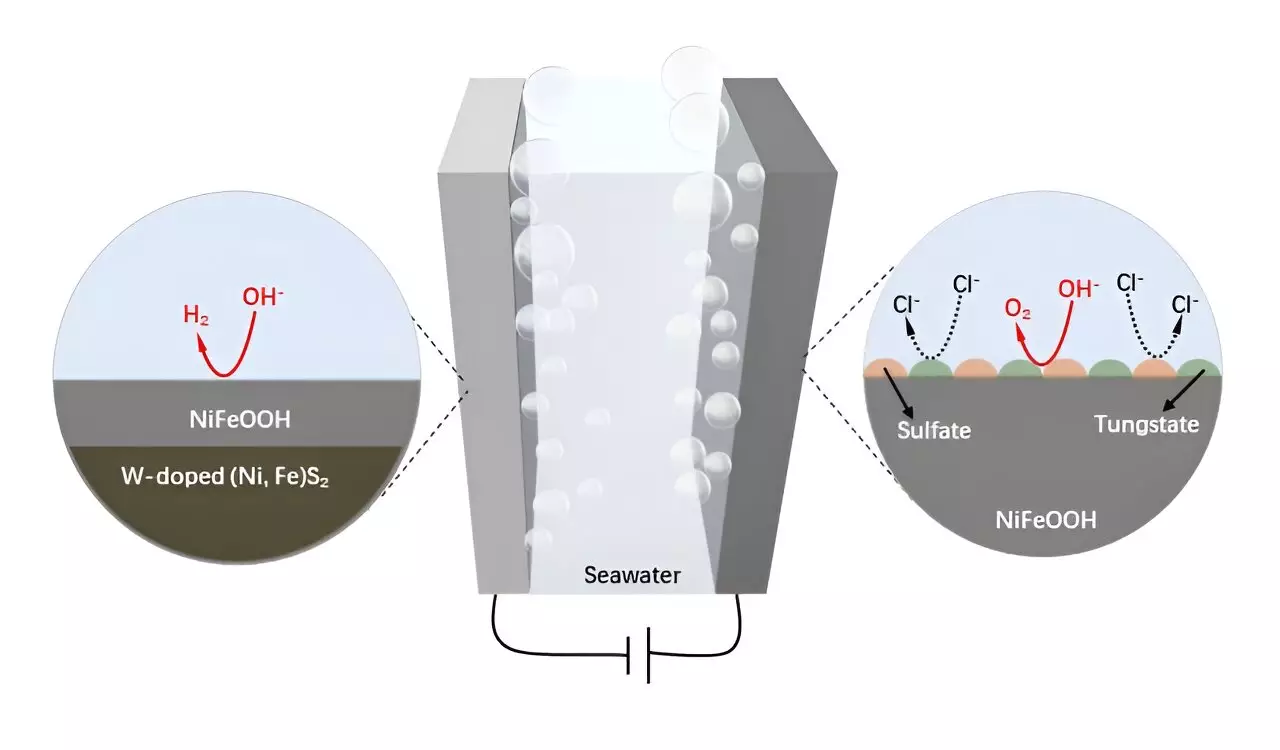Seawater electrolysis represents a significant opportunity to achieve decarbonization in the global energy landscape. This innovative technique aims to produce hydrogen—an essential renewable energy source—by utilizing the abundant resource of seawater. However, this potential is curtailed by several critical challenges, including the corrosion of anodes due to chloride ions, the occurrence of unwanted chloride oxidation reactions, and the expensive nature of currently utilized catalysts. Addressing these hurdles is crucial for the advancement of seawater electrolysis into a viable mainstream technology.
Recent developments in catalyst technology are paving the way for more effective seawater electrolysis. Among these, self-supported nickel-iron (NiFe) materials have emerged as promising bifunctional catalysts, excelling in both hydrogen and oxygen evolution reactions. Their affordability coupled with remarkable intrinsic activity has garnered attention in the scientific community. Additionally, the integration of wood-based carbon (WC) structures into these catalysts provides a unique substrate that enhances their performance. WC offers hierarchical porosity and superior electrical conductivity—traits that greatly benefit electrochemical processes.
To improve the stability of NiFe-based electrodes in seawater electrolysis systems, a team of researchers led by Professors Hong Chen, Bing-Jie Ni, and Zongping Shao has innovated a new methodology. Their findings, published in the Science Bulletin, showcase how the introduction of tungsten (W) into NiFe catalysts substantially enhances their anti-corrosion properties. This was achieved through the development of a W-doped NiFe sulfide catalyst supported by WC (denoted as W-NiFeS/WC), utilizing a specialized preparation technique that integrates impregnation with sulfidation.
The revolutionary W-NiFeS/WC electrode exhibits a three-dimensional porous architecture, characterized by oriented microchannels and densely packed W-NiFeS nanoparticles. This unique design not only augments its electrical conductivity but also improves its overall efficiency in electrochemical reactions. Notably, the electrode demonstrates enhanced electrocatalytic capabilities while maintaining stability under alkaline seawater conditions—a critical factor for long-term applications in energy conversion.
The research highlights the important role of structural evolution in electrochemical processes, particularly in optimizing catalysts for energy conversion reactions. The in situ formation of anti-corrosive tungstate and sulfate species during the oxygen evolution reaction plays a key role in stabilizing the Ni/Fe oxyhydroxides. Additionally, the self-assembled W-NiFeS decorated NiFeOOH shows exceptional efficiency in facilitating the hydrogen evolution process.
This innovative approach not only underscores the potential of repurposing wood waste into effective electrochemical materials but also signifies a step towards a circular economy. By transforming these abundant resources into efficient catalysts, this research promotes sustainable hydrogen production while minimizing waste output. The shift towards utilizing renewable resources—combined with groundbreaking catalytic advancements—could redefine the future of sustainable energy systems.

